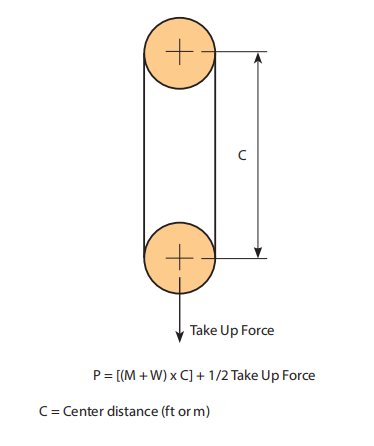Introduction
A cautious evaluation in the conditions surrounding a conveyor is critical for exact conveyor chain selection. This segment discusses the fundamental considerations required for thriving conveyor chain assortment. Roller Chains are sometimes used for light to reasonable duty materials managing applications. Environmental circumstances may perhaps demand using distinctive products, platings coatings, lubricants or even the capability to operate without the need of further external lubrication.
Basic Information Demanded For Chain Selection
? Type of chain conveyor (unit or bulk) including the process of conveyance (attachments, buckets, through rods and so on).
? Conveyor layout including sprocket locations, inclines (if any) plus the variety of chain strands (N) to be employed.
? Amount of materials (M in lbs/ft or kN/m) and variety of materials to get conveyed.
? Estimated bodyweight of conveyor parts (W in lbs/ft or kN/m) such as chain, slats or attachments (if any).
? Linear chain speed (S in ft/min or m/min).
? Environment through which the chain will operate together with temperature, corrosion circumstance, lubrication situation etc.
Stage 1: Estimate Chain Tension
Make use of the formula beneath to estimate the conveyor Pull (Pest) then the chain stress (Test). Pest = (M + W) x f 
Check = Pest / N
f = Coefficient of Friction
SF = Pace Issue
Phase two: Create a Tentative Chain Variety
Using the Test worth, produce a tentative choice by choosing a chain
whose rated operating load greater than the calculated Test value.These values are ideal for conveyor service and therefore are diff erent from people proven in tables at the front from the catalog which are related to slow pace drive chain utilization.
Also to suffi cient load carrying capacity often these chains should be of the certain pitch to accommodate a desired attachment spacing. As an example if slats are for being bolted to an attachment every 1.5 inches, the pitch with the chain chosen ought to divide into one.5?¡À. Therefore one particular could use a 40 chain (1/2?¡À pitch) together with the attachments every 3rd, a 60 chain (3/4?¡À pitch) with all the attachments every 2nd, a 120 chain (1-1/2?¡À pitch) using the attachments every pitch or even a C2060H chain (1-1/2?¡À pitch) using the attachments just about every pitch.
Stage three: Finalize Variety – Determine Real Conveyor Pull
After producing a tentative assortment we have to confirm it by calculating
the actual chain tension (T). To try and do this we ought to fi rst calculate the real conveyor pull (P). Through the layouts shown to the proper side of this web page decide on the proper formula and determine the total conveyor pull. Note that some conveyors might be a mixture of horizontal, inclined and vertical . . . in that situation calculate the conveyor Pull at each area and include them with each other.
Stage four: Calculate Maximum Chain Stress
The maximum Chain Tension (T) equals the Conveyor Pull (P) as calculated in Phase 3 divided from the amount of strands carrying the load (N), instances the Pace Issue (SF) shown in Table 2, the Multi-Strand Issue (MSF) proven in Table 3 along with the Temperature Component (TF) proven in Table 4.
T = (P / N) x MSF x SF x TF
Stage five: Verify the ?¡ãRated Functioning Load?¡À in the Picked Chain
The ?¡ãRated Functioning Load?¡À of your chosen chain should really be better compared to the Maximum Chain Tension (T) calculated in Phase four over. These values are appropriate for conveyor services and are diff erent from those shown in tables on the front with the catalog which are related to slow speed drive chain utilization.
Stage six: Check out the ?¡ãAllowable Roller Load?¡À with the Chosen Chain
For chains that roll about the chain rollers or on top rated roller attachments it is required to examine the Allowable Roller Load?¡À.
Note: the Roller load is established by:
Roller Load = Wr / Nr
Wr = The complete bodyweight carried from the rollers
Nr = The quantity of rollers supporting the bodyweight.